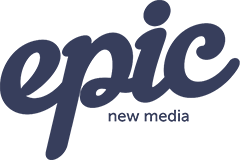5 reasons why your PPC account isn’t generating leads

Pay-per-click (PPC) is an effective channel for businesses wanting to generate leads and revenue. However, PPC isn’t as straightforward as one might expect. It’s easy for business owners to presume that it’s the answer to all of their marketing problems but many advertisers are left scratching their heads when leads aren’t generated as they expect. In this blog post, we’ll explore 5 common reasons why your PPC account might not be generating the leads you expect and, importantly, how to rectify the issue.
Wrong Keyword Match Type
One crucial aspect of a successful PPC campaign is choosing the right keyword match type. Ultimately, this determines the effectiveness of the campaign and dictates whether it both reaches and engages your target audience.
Broad Match might seem attractive: it’s expansive and will attract lots of clicks. However, these clicks will be largely irrelevant and will do nothing other than waste your budget. Such an indiscriminate approach will likely not result in meaningful conversions. The audience won’t necessarily align with your product or service.
Yet, Exact Match might limit your reach too as you risk constraining your reach. If you don’t use proven keywords and choose ones that are too narrow, you might find your ads not surfacing at all. This is limiting in terms of the overall effectiveness of your campaign as it excludes the broader audience and the potential opportunities they provide.
The solution is to strike a balance with a combination of Phrase Match and Exact Match. This strategic approach will make sure you don’t miss potential opportunities. Your ads will be shown to a relevant audience searching for similar keywords, striking a balance between reach and precision.
Not Using Negative Keywords Correctly
Before any PPC campaign starts, you need to ensure you carry out effective keyword research. Failing to do so might mean your budget is wasted on irrelevant clicks. Choosing to spend time and effort on campaign research will pay off in the later stages of your campaign.
Keyword research means you understand the language your audience is using and what they’re looking for. However, the most successful businesses also look at negative keywords. These are words and phrases that prevent your ads from being displayed in search results containing the term. In effect, they do the opposite of keywords.
Using negative keywords means your ads won’t be displayed in irrelevant contexts and so you won’t be wasting any budget on them. Applying these at the campaign level and in excluding lists helps prevent your ads from being displayed in searches where conversions aren’t likely. Using negative keywords in this way is powerful: it allows you to refine your target while also maximising the efficiency of your budget.
Wrong Bid Strategy
You need to choose a bid strategy that aligns with the goals of your campaign. This results in your spending achieving the best results. Shopping campaigns, for example, should use Target Return on Ad Spend (ROAS). This will ensure you get optimal ROI as your bids will be tailored to maximise revenue alongside efficiency.
When lead generation is your primary objective, you’d want a strategy that mixes precision with cost-effectiveness. Here, targeting Cost Per Acquisition (CPA) or Maximising Conversions would work best. CPA ensures that the investment made by the business correlates with customer acquisition as leads are acquired at a predetermined cost. Maximising Conversions bids, on the other hand, strike a balance too as they allocate your budget to achieve the maximum number of conversions. Both bid strategies provide a balance between lead quality and cost-effectiveness.
As for brand campaigns, these require a strategy that enhances visibility and brand awareness. For this, the best bid strategies would be Maximise Clicks or Target Impression Share. Maximise Clicks results in a high click volume while Target Impression Share ensures your brand remains visible to your target audience.
Weak Calls To Action
Getting website traffic is only half of the battle. You then need to convert the traffic into leads. Traffic should arrive on a landing page containing the relevant target keywords among compelling calls to action (CTAs) that encourage conversion. Whether this means filling out a form, contacting the business or making a purchase, a strong CTA can impact your conversion rates significantly and lead to improved campaign success. The most successful campaigns have CTAs that aren’t a simple button on a webpage. Rather, they prompt decisive behaviour from the target audience through their use of persuasive language and a clear value proposition.
Bloated Campaigns
It’s an overused phrase but in the case of PPC advertising, less really is more. If your PPC campaign contains too many ad groups, keywords or both for the available budget, they’ll compete for spending. This prevents the keywords from being sufficiently tested, which results in campaign ineffectiveness.
By focusing your campaigns on high-performing keywords, you can allocate your budget more efficiently while gaining clearer insights into what works for your audience. Though they may seem simplistic as campaigns, you will find yourself with a manageable subset of keywords to target, leading to an optimised and refined PPC strategy.
Final Thoughts on why your PPC account isn’t generating leads
Many business owners wrongly believe that setting up a PPC account automatically leads to successful lead generation. If a campaign isn’t working, addressing these common pitfalls will likely solve the problem. By fine-tuning keyword and bid strategies, perfecting CTAs and generally decluttering campaigns, your PPC experience can be more effective. Remember, though, stay vigilant to changes and adapt in a timely manner to stay ahead.Top of Form
